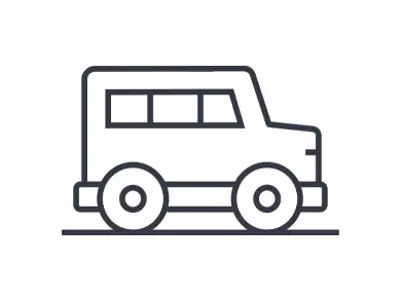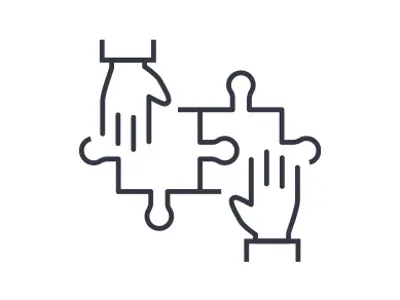Shaping an age friendly Wood Buffalo
The Regional Municipality of Wood Buffalo, the Advisory Committee on Aging (ACoA) and community organizations are committed to making Wood Buffalo an age-friendly community.
What is an age-friendly community?
An age-friendly community encourages active aging by optimizing health, participation, and security opportunities to enhance the quality of life as people age. In practical terms, an age-friendly community adapts its structures and services to be accessible to and inclusive of older people with varying needs and capacities. It is widely acknowledged that a community that addresses its senior population’s needs is a community that is friendlier to all ages.
Our Work Plan
The Age-Friendly Wood Buffalo Work Plan highlights the ACoA’s vision of aging with dignity in Wood Buffalo. It highlights goals, proposed actions, strategic partners, and community stakeholders for each identified local priority.
Check out the Age-Friendly Wood Buffalo Work Plan Wood Buffalo Age-Friendly Needs Assessment
While many local community stakeholders are already part of the solution, we are always looking for new individuals and organizations to be an active part of this great initiative. Check out the Wood Buffalo Age-Friendly Work Plan and local priorities to see where you fit in and help shape an age-friendly Wood Buffalo.
Local Priorities
The age-friendly assessment scope identified needs and gaps based on the eight domains within the WHO’s Global Age-Friendly Cities framework. Based on the input received from community stakeholders and public working groups, the WHO's eight domains were refined as local priority areas. Residents, community stakeholders, and the ACoA are committed in ensuring supportive policies, services and programs are in place to enable older adults to age and live comfortably in Wood Buffalo. Click on a domain below to learn more!
Wood Buffalo Older Adults – by the numbers
According to the 2018 Municipal Census, the older adults’ population increased by 1.2% to 3% (from 2012 to 2018) with 11.6% of the older adults’ population living in the rural communities. Wood Buffalo’s population among the 50-59 age group has steadily increased from 16.3% in 2012 to 17% in 2018. This progression indicates a future increase in the population of older adults 65 years and above.
In 1971, older adults accounted for 8% of Canada’s population. It is estimated that by 2036 that number will rise to 25%. Local and national statistics further underscore the need for age-friendly policies, services and programs to keep this key demographic living comfortably in our region.
Advisory Committee on Aging
The Advisory Committee on Aging's (ACoA) mandate is to gather public input and make strategic recommendations to Council regarding service delivery for seniors. In late 2015, the ACoA and its partner agencies hosted a series of engagements to capture public input towards the Committee's vision of Aging with Dignity in Wood Buffalo.
In addition to public engagement, the ACoA has, with Council approval, applied to the World Health Organization and began working toward the requirements for designation as an Age-Friendly Community.
Housing
Priority Area: Maintenance and Modifications
Goal: Home maintenance services and modification services are available and are affordable for older adults.
Strategy: Develop programs and services for older adults that aid with costs related to home maintenance, modification, and affordability.
Proposed Actions:
- Enhance awareness of and access to services and information about programs that provide financial assistance for the cost associated with housing affordability.
- Explore potential support for home maintenance and modification assistance and volunteer programs.
- Develop and support a lawn care volunteer-based program for older adults.
Priority Area: Housing Options
Goal: There is a range of age-friendly affordable, and accessible housing options for older adults in the region. Lack of older adults housing and housing option was noticeable in the rural communities according to the 2017 Needs Assessment.
Strategy: Support the development of age-friendly affordable and accessible housing options for older adults in RMWB.
Proposed Actions:
- Advocate for sustainable funding for the development of new affordable and accessible older adults housing options (i.e., Older Adults Housing Master Plan).
- Promote and advertise available housing options with consideration for both digital and print channels.
- Continuous collaboration with Alberta Health Services (AHS) and Willow Square facility to ensure that local needs are prioritized when placing clients.
Transportation
Priority Area: Health and Assisted Transportation Services
Goal: Accessible, safe, and affordable transportation services are available for older adults in the region.
Strategy: Develop and implement transportation strategies that are responsive to seniors’ transportation needs.
Proposed Actions:
- SMART Bus curb to curb, priority “pick-ups” and “drop-offs” services to older adults and older adults with mobility differences.
- Age friendly training is provided for transportation service providers and partners.
Priority Area: Community Transportation Services
Goal: Community transport services are available and affordable for older adults.
Strategy: Ensure affordable, safe, and accessible community and alternative transportation services for older adults are available in the community.
Proposed Actions:
- Develop a continuum of affordable community transportation services.
- Facilitate access to and use available information and resources about seniors’ transportation services.
Community Supports and Health Services
Priority Area: Diversity of Health Services
Goal: Older adults have access to a wide range of affordable in-home supports and health services.
Strategy:
- Ensure that older adults have access to a wide range of services and information about medical professionals and specialists.
- Promote education and training specific to the needs of older adults, for those providing community support and health services.
Proposed Actions:
- Promote existing services and provide information to older adults in different formats including language translation.
- Advocate and lobby for required health services (i.e., specialist services in town).
- Support programs that train and prepare older adults and service providers for emergency disaster response.
Priority Area: In-home support and Community Service Delivery
Goal: Older adults are supported to maintain independence.
Strategy:
- Ensure that older adults in-home and community supports, and services are available, affordable, and are appropriate.
- Ensure older adults are informed and aware of health and wellness activities that promote physical and mental wellbeing.
- Older adults are safe from preventable injury in and around their homes.
Proposed Actions:
- Promote older adults in-home support programs and community services that provide support for arrange of needs.
- Promote and advocate for health and wellness initiatives that promote and inform older adults of educational opportunities/programming that allow them to live as independently as possible regardless of living situation.
- Support rural communities to develop and coordinate Snow Angel Program.
- Collaborate with partners to develop and implement strategies to coordinate in-home safety check.
Social Participation
Priority Area: Connection and Engagement
Goal: Older adults are socially and physically active and are connected to community.
Strategy: There are opportunities for older adults to participate and interact with other people in the community both socially and physically.
Proposed Actions:
- Encourage and support community programs that engage older adults to enhance their social connections and mental well-being.
- Create and design affordable and accessible community activities and programs that promote physical and social well-being opportunities for older adults.
- Continue to consult and engage senior citizens on community initiatives that affect their well-being.
Priority Area: Affordability and Accessibility
Goal: Establish accessible and universal design of programs and facilities as a framework of best practices.
Strategy: Ensure that information, programs, and facilities are accessible and are affordable for older adults and older adults with disabilities.
Proposed Actions:
- Continue to support the implementation of barrier-free building design.
- Develop and promote universal and accessibility design guide.
Civic Participation and Employment Opportunities
Priority Area: Volunteer Opportunities
Goal: Older adults’ skills are valued and respected as volunteers.
Strategy: Ensure there are a range of volunteer opportunities available and supported for older adults to participate.
Proposed Actions:
- Raise awareness about the benefit of older adults’ contribution and participation on boards/committees.
- Continue to support and enhance older adults volunteer appreciation opportunities.
Priority Area: Age-Friendly and Inclusive Workplace
Goal: Older adults’ skills are valued and respected as employees.
Strategy: Ensure that older adults' skills and attributes are recognized and appreciated in the community.
Proposed Actions:
- Develop and promote an age-friendly business recognition program.
- Collaborate with local businesses to adopt age-friendly business practices.
Priority Area: Civic Participation
Goal: Older adults are well represented in both public and support organizations, and have a voice in the decisions that affect their community.
Strategy: Encourage public and support organizations to engage and involve older adults in the community decisions and initiatives.
Proposed Actions:
- Engage and consult older adults on the community development initiatives.
- Conduct awareness workshops and age-friendly training to public and support organizations.
- Promote existing opportunities and increase older adults’ representation in both public and support organizations.
Respect and Social Inclusion
Priority Area: Intergenerational Respect and Interactions
Goal: Older adults are valued and are treated with respect.
Strategy: Establish opportunities, and programs that supports intergenerational interactions, mental health, and social connection.
Proposed Actions:
- Facilitate and promote community wide education and awareness campaign to combat ageism and stereotypes.
- Establish a recognition program for the contributors/champions of older adults’ quality of life in the RMWB.
Priority Area: Social Inclusion
Goal: Older adults have access to opportunities to participate and contribute to the community.
Strategy: Ensure that community activities, events, programs, and facilities are accessible, affordable and are inclusive.
Proposed Action: Create and foster cultural, social, and recreational educational programs and activities.
Communication and Information
Priority Area: Accessible Information
Goal: Information is accessible, reliable, and available for older adults, caregivers, and support providers.
Strategy:
- Ensure older adults have access to information about services that is accessible, reliable, and accurate.
- Enhance opportunities for digital access, information, and technology literacy for older adults.
Proposed Actions:
- Promote and maintain existing information media/channels (such as MAC Calendar, Older Adults’ Resources Guide).
- Enhance and continue support of information-sharing network for older adult service providers.
- Gaps and barriers to COVID-19 information and resources are identified and addressed.
- Promote collaboration among community organization to improve technology literacy and ensure that internet and computer services are accessible, affordable, and available for older adults.
Priority Area: Widespread Communication
Goal: Older adults have access to information in all desirable formats of communication.
Strategy: Ensure that information is available in a variety of formats and in contexts that are inclusive of older adults’ interests and is easily accessible.
Proposed Actions:
- Use age-friendly formatting and designing practices for website information and other publications.
- Support and provide alternative accessible communication and information sharing (i.e., closed captioning service, sign language, and interpretation services).
Outdoor Spaces and Buildings
Priority Area: Accessible Buildings, Public Restrooms and Rest Areas
Goal: Outdoor spaces and community buildings are designed and maintained to be age-friendly safe, and accessible.
Strategy: Ensure that public washrooms and rest areas around public spaces, parks, and trails are available.
Proposed Actions:
- Support and promote the development of universal and accessibility design.
- Increase number of accessible rest areas and accessible public restrooms.
Priority Area: Sidewalks, Parks and Trails
Goal: Parks, pathways and trails are maintained to be safe, clear, and are accessible.
Strategy: Ensure that sidewalks, parks, and trails in most or all areas of the community are well- maintained and are accessible.
Proposed Actions:
- Follow the age-friendly standards and universal design practices repairing and installing curb cuts, sidewalks and designing outdoor spaces.
- Support rural communities to develop, adopt and coordinate Snow Angel Program in their communities.
Contact Us
PULSE
Submit a request
Phone: 780-743-7000
Toll free: 1-800-973-9663
Subscribe for RMWB updates
Stay up to date on the services, programs and projects in your neighbourhood!








